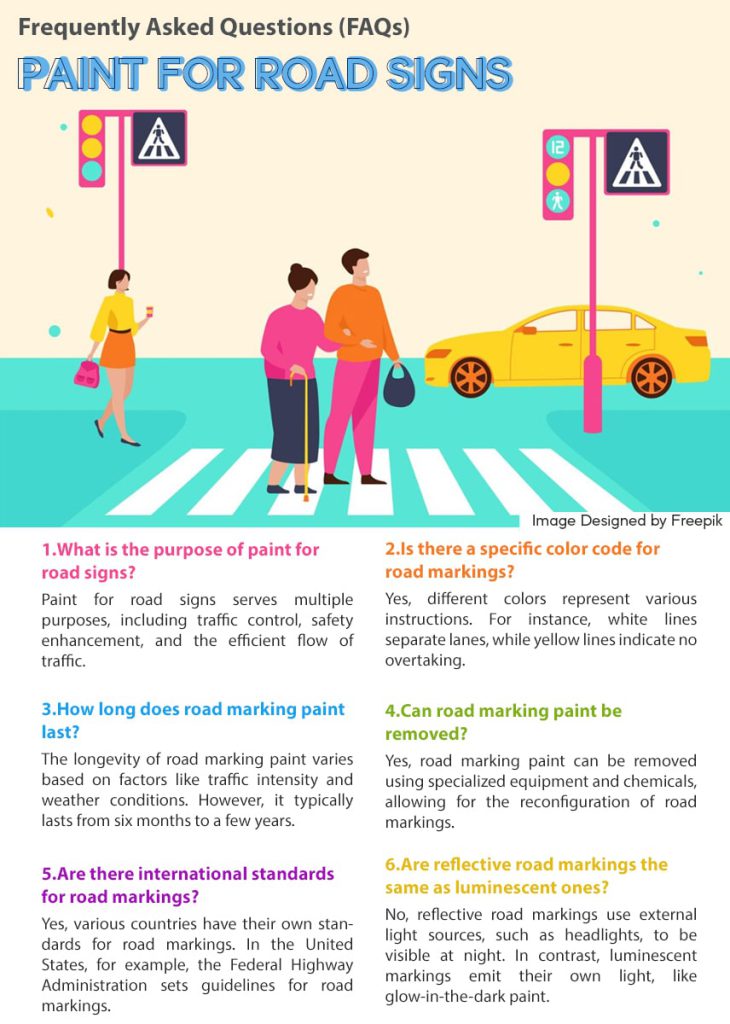Discover the importance of Paint for Road Signs and Signals optimizing road safety. Explore expert insights and FAQs about this crucial topic.
In the realm of road safety, one critical aspect that often goes unnoticed is “Paint for Road Signs and Signals,” or road marking paint. These seemingly inconspicuous lines and symbols on the road play a pivotal role in ensuring safe and efficient traffic flow. In this comprehensive guide, we delve deep into the world of Paint for Road Signs and Signals, exploring its significance, types, application, and much more. Let’s embark on this journey to enhance our understanding of how road markings make our roads safer.
Paint for Road Signs and Signals is not merely paint on the road; it’s a language that speaks to drivers, pedestrians, and cyclists. It conveys crucial information and instructions, keeping everyone safe and traffic flowing smoothly.
The role of Paint for Road Signs and Signals can be summarized as follows:
Traffic Control:
Paint for Road Signs and Signals includes lane dividers, pedestrian crossings, and stop lines, all of which control traffic, prevent accidents, and maintain order.
Safety:
Road markings inform drivers of potential hazards, like curves and speed bumps, prompting them to adjust their speed and driving behavior accordingly.
Efficiency:
Properly marked lanes and intersections reduce traffic congestion, making commuting more time-efficient.
Accessibility:
Crosswalks and pedestrian lanes ensure safe passage for pedestrians, particularly those with limited mobility.
Visibility:
Reflective paints and cat’s eye markers enhance road visibility, making night driving safer.
Now that we understand the importance of Paint for Road Signs and Signals, let’s explore the different types of road marking paints and their applications.
Types of Road Marking Paint
Road marking paints come in various formulations, each designed for specific applications:
Thermoplastic Paint:
Known for its durability, thermoplastic paint is applied using heat. It’s commonly used for lane dividers and crosswalks.
Water-Based Paint:
This eco-friendly option is suitable for temporary road markings and is easy to remove.
Epoxy Paint:
Epoxy-based paints are highly durable and are often used in areas with heavy traffic.
Reflective Paint:
This type of paint contains glass beads or reflective elements, making road markings highly visible at night.
Non-Slip Paint:
Ideal for pedestrian crossings and ramps, non-slip paint ensures safety, even in wet conditions.
The Process of Applying paint for road signs and Signals
Applying road marking paint is a meticulous process that involves several steps:
Surface Preparation:
The road surface must be clean and dry before application.
Marking Layout:
Technicians mark the layout of road markings, ensuring precision.
Application:
The chosen paint is applied using specialized equipment, like spray machines or hand tools.
Drying and Curing:
The paint needs time to dry and cure, often aided by heat or chemicals.
Reflective Elements:
For enhanced visibility, reflective elements are added to appropriate markings.

Conclusion
Paint for road signs is the silent guardian of our roads, guiding us safely to our destinations. It’s a testament to human engineering and the quest for safer and more efficient transportation. Understanding the nuances of road marking paints and their applications is not only intriguing but crucial for all road users. So, next time you hit the road, remember the unsung heroes, the Paint for road signs, ensuring that your journey is both safe and smooth.

